Tosh Berman's Blog, page 109
January 21, 2021
Albums That Were Important to Tosh in 1992
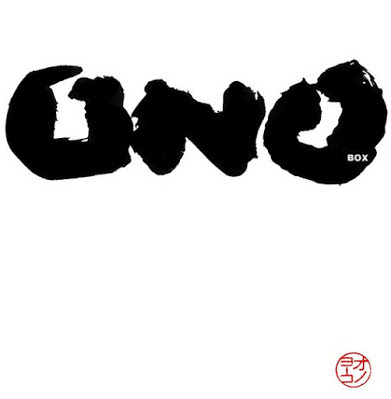
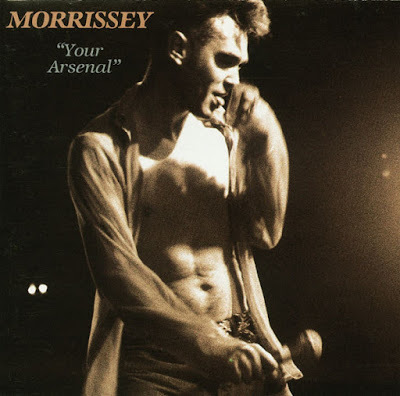
1992 I was pretty much busy working in the Beyond Baroque world as its Director and Curator. I had a craving for music but it got very unimportant to me at this time. Looking through the releases there are only two albums that made an impression on me, and they are albums by well-known, yet controversial artists. Yoko Ono and Morrissey. Beyond that, on a music level, I must have been focused on buying old Serge Gainsbourg and Joe Meek related music. French Pop made an impression on me, due to my visits to Japanese record stores. The Ono Box was a retrospective of Yoko's recordings, and it is probably the best set exploring her music. The Morrissey "Your Arsenal" was his 'rock' recording, produced by the great Mick Ronson. At this time, I felt Morrissey was at his height as an artist and 'public figure.' At the time, I thought his approach to the Right-Wing was as in a fictional character. Nevertheless, I have always preferred the solo Morrissey to The Smiths. Not a popular opinion by the way! -Tosh Berman
January 20, 2021
Albums That Were Important to Tosh in 1991
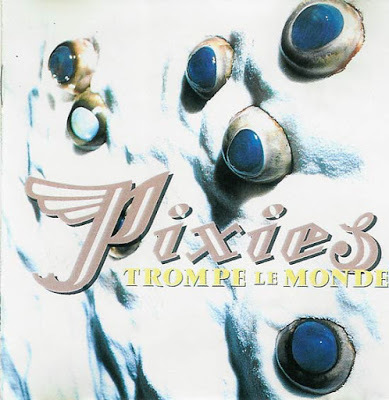
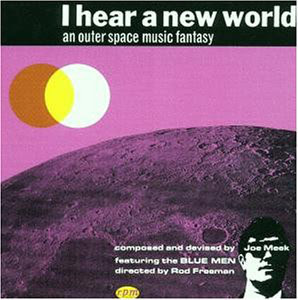
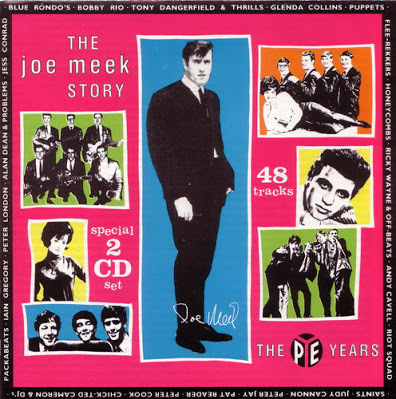
1991 was a mega-year for me. I worked at Book Soup and worked at Beyond Baroque Literary Arts Center in Venice, California. We also moved from a crummy apartment in Hollywood to Silver Lake in one of those dreamy Walt Disney Snow White architectural wonders. While living in Japan, I did a book of poetry, and everything seemed right to me. And we were still going to Japan, at least once a year. The amazing thing about that year is I had no interest in any music released that year. It was a big year and iconic, due to Seattle bands' resurgence like Nirvana making it big. I admired Kurt and company, but the music meant nothing to me. What impressed me, and was totally new to me at that time was Pixies's "Trompe le Monde." I have heard of them but never their music, until a visit at Tower Sunset, and out of curiosity, listened to this album. By the time I heard the third track, "Alec Eiffel," I was hooked. To this day, I love "Alec Eiffel." I then purchased their past albums, and although I wasn't a fanatic fan, I really love "Trompe le Monde." While visiting Tokyo that year, I picked up on a compilation of Joe Meek's productions/songs as well as his odd masterpiece "I Hear a New World." In 1991, I became a Meek obsessive. Also, I started to listen to Serge Gainsbourg. He died that year, and again, being in Japan, it's easy to be exposed to French pop music. Every music store in Japan had a sizable French Pop section. So, yes, French pop culture made an appearance, which leads to my TamTam Books.
January 19, 2021
January 19, 2021, by Tosh Berman
January 19, 2021
It's the fate that Patricia Highsmith shares the same birthday date as Edgar Allen Poe. Two horror writers understood a troubled psyche and how that can cause an atrocity in one's life and fiction. I first discovered Highsmith's work just right before I made a massive trip to Europe in 1986. "The Talented Mr. Ripley" made an impression on me as a realistic study of a sociopath personality. Throughout the years, I felt I have met or known a version of Tom Ripley. They are more common than one thinks. They usually lurk around the fringes of the wealthy and powerful.
Identity as an issue or subject matter lingers in my mind for many years now. I'm struck by how people adapt to their and other cultures by imitating genuinely not their behavior. Suppose you were not born in a specific class or social placement. In that case, therefore, you either re-do your personality or identity to fit into a social setting. One notices this in the art world, and I have to presume in the music and film world as well. Highsmith work's unique thing is that she doesn't take a moral stand on a crime or the conflicted personality who commits the crime or act of violence. The reader put themselves into the plot, and there is always that creepy feeling that you are in compliance with the crime.
My father and I didn't have many serious talks, but I remember when I was a teenager, and he told me that I should never feel guilt. If I caused someone harm due to an accident, never feel guilty. Why he brought this up to me is still a mystery. Whenever I read Highsmith, I think of what my dad told me. They're five-years in the age difference, and I suspect if Wallace (my dad) knew Patricia, he would like her. Even though she was not crazy about Jewish people, I guess that there would have been some form of friendship between them.
Highsmith wrote a book of short stories about animals who commit murder, "The Animal Lover's Book of Beastly Murder." Her love of animals was not on the same plain as cute kitties and smiling dogs; no, her animals have a sinister quality. And she was an animal lover. Highsmith raised and traveled with snails. She would put them in her purse, with some lettuce, to feed themselves on trips. I suspect that she lived a life without anyone around her. Highsmith wrote characters that were so real, with all the duality aspects of a figure who can't develop or deal with the lack of identity. Murder and violence in her books are, in a funny manner is a transgression of an intimate feeling between two people. When I was in Europe doing the travel thing, I would find her books used mostly in the Penguin editions. I brought them home with me, and reasons I don't know why, but her work makes me feel human.
Albums That Were Important to Me In 1990
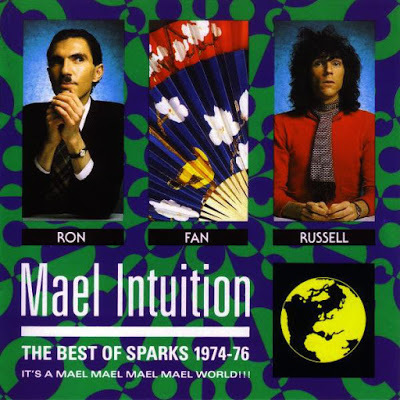
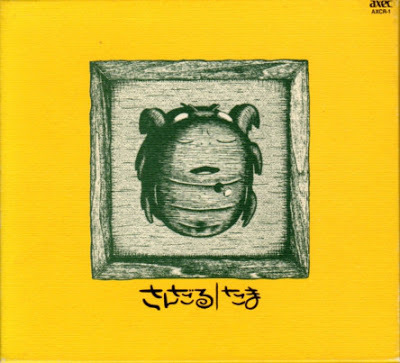
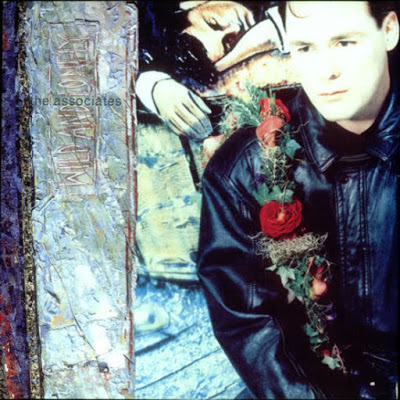

In 1990, I spent half the time in Moji-Ko on the island of Kyushu and then Tokyo. After going through a horrific time in Lun*na's hometown, I became obsessed with the music around me. In the port town, there is a music shop that sold CDs. Half of it was Western music, and the other was Japanese pop music. The only Western music they sold there were hard rock bands from the 1970s and oldies. I bought the first two (the third album was a live release) Honeycombs album on one CD. As friends and readers know, I have been obsessed with their recording of "Have I The Right." It was also on this trip that I recognize the name, Joe Meek. On future trips to Tokyo, I bought various compilations of Meek's productions and recordings. But in Moji-Ko, I became a devoted fan of the band TAMA. I discovered them on late-night TV where there was a battle of the bands, and they were terrific. They reminded me a lot of The Balancing Act, in that their instrumentation was acoustic, but their focus was on Japanese folk music but weird folk. The other Japanese artist I was devoted to was Jun Togawa. The album below is a six-song EP (CD), and again she is somewhere between Kate Bush and electro-pop with weird Japanese pop from pre-war Japan. She's unique in voice and music.
Once I hit Tokyo, I purchased the new Associates' album, which is really a Billy MacKenzie solo, and a compilation of Sparks music from their era with Island Records. Those two albums were my only connection to the Western World. Other than that, I was only reading Japanese 20th-century literature, oh, and I did purchase a lot of Glenn Gould on CD. Sony did an incredible job in re-releasing the entire Gould catalog. I couldn't avoid that buy!
January 18, 2021
January 18, 2021, by Tosh Berman
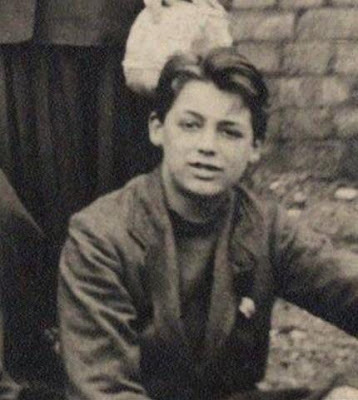
January 18, 2021
“I pretended to be somebody I wanted to be until finally, I became that person. Or he became me.” Acting or I should say performing, allowed me to wear someone else’s clothes. I never was interested in me being “me,” but more obsessed with the idea of being just something a bit more, if you get my drift? “I began by acting like the person I wanted to be, and eventually, I became that person.”
I do mostly comic roles because I have an understanding of absurdity. Each glance can bring a laugh, but there is a darkness that lurks behind the chortle. My facial expression shows laughter, but it can also be crying. The essence of acting to me is to land between misery and humor. Each scene should be seen as a sculpture, where I and the others take space and transform it into a dimensional landscape. The answer is never direct but more implied with nuance and skill with the written word (script).
As a teenager, I often went to the Bristol Hippodrome to see the annual pantomime. It was a popular form of theater that was a variety show; it came from the 16th-century French commedia dell’arte. The entrance to that world leads me to New York performing with the Pender Troupe. Still, eventually, I stayed in New York and made a name for myself in Vaudeville. I moved to Hollywood in 1930 and made my first real successful film, “Blonde Venus.” It was around this time I met Randy.
I had a happy life with Randy, but life has a way of pulling you to directions that one couldn’t control. I never regret the changes that took place, and I felt confident that destiny will work on my behalf. Working with Hawks and Hitch gave me the opportunity to convey a series of textures in my performance. A rich life doesn’t always mean the financial comforts, but more questioning who I’m. LSD interested me greatly, and I do recommend it under a doctor’s approval. I had so many barriers that I needed the assistance of the drug to remove the curtains that separated me from life.
I can’t express how bizarre the world is and how lucky that I became what I became. The insanity of our times, and that I was able to float on the currents with nothing but my charm, is a skill, but chance has a lot to do with it. When I think back as that small boy in Bristol, England, raised by an alcoholic father and a clinically depressed mother, it seems I had no choice but to transform myself into another fellow. It’s interesting to note that my father was a tailor’s presser at a clothes factory, and my mother, a seamstress, that I instinctively know the importance of clothes. My father once told me to buy only expensive shoes, then say five cheap pairs of shoes. The expensive shoes will last longer and age beautifully. With the help of well-developed people and LSD, I became the man I wanted to be.
Our Playlist for Robert Gordon's "It Came From Memphis
Kimley and I put together a playlist to go with our interview with Robert Gordon. We mostly got the music from his book "It Came From Memphis," but we really dig into the archives for sounds. I hope you will enjoy what we found here:
Spotify: https://open.spotify.com/playlist/3qgLY45R5tfG4OtagMuSw0?si=fHJrmeOrS0ih8ZlQeACUyg
Apple Music: https://music.apple.com/us/playlist/book-musik-it-came-from-memphis-by-robert-gordon/pl.u-5511HVA99bJ
1989 Album Releases Important to Tosh
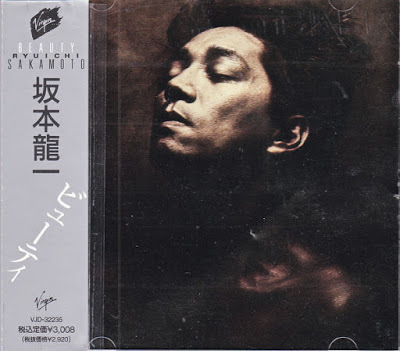
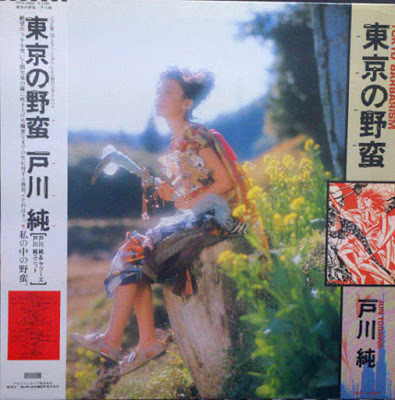
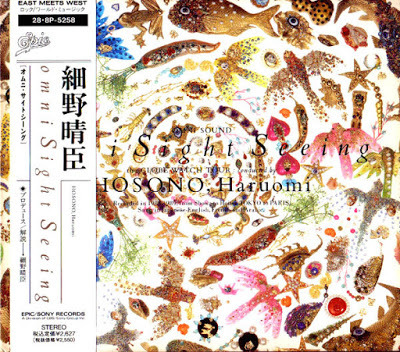
My life totally changed when I got married on Christmas Eve in 1988. In 1989, we took a trip to Japan for three weeks. We had a marriage ceremony or reception in Moji-ko, on the island of Kyushu, and then mostly spent our time in Tokyo. When we came back from this trip, we almost immediately went back to Japan due to an illness in the family on the Japanese side. My wife went first, and then a few weeks later, I had to join her. Basically, I had to drop everything in my life to be with her in Japan to deal with this medical crisis. And also, there were vista issues where we couldn't come back to America. So, I was exiled from America and living in Japan. Like most of my life, nothing was planned. I arranged for someone to take care of our apartment, which included my library and record collection. I remember I brought for the trip Roland Barthes "Empire of the Senses," his book on Japan, and a few Mishima novels. Other than that, I pretty much abandoned everything, or my life in America was on hold. Once in Japan (again), I avoided Western music, except for Tin Machine (die-hard Bowie fan) and Roy Orbison's "Mystery Girl." My new discoveries on my exile were Harumi Hosono's "Omni Sight Seeing," Ryuchi Sakamoto's "Beauty," and the best of all, Jun Togawa's "Tokyo No Yaban," a compilation of her older work.
January 17, 2021
January 17, 2021, by Tosh Berman
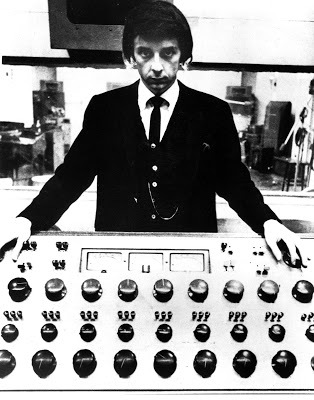
January 17, 2021
Joe Meek and Phil Spector were only 10 years apart in regards to age. Not only did they murdered women, but also for no reason, except for their insanity. One can't avoid or put off their actions, but at the same time, one has to deal with their brilliance in their field of making or capturing music in a room. That room eventually becomes a recording. Therefore, when I hear Meek and Spector's recordings, I also think of their space and how they used that room to make magic.
Joe was more of a science geek than a musician like Phil. One can make a reasonable argument that Spector is a better songwriter and music maker than Meek. On the other hand, Joe's approach to music is more sexual or sensual than Spector. Phil captured numerous passions that are cinematic and bold. Meek captures the essence of being an outsider and queer in a mainstream music world. Of course, the music landscape is a floating world of passions spent and explored, so nothing fits in or is contained in a box. A work of art often overcomes categories and restrictions and becomes a different medium. The quirky personalities and murderous rage adds a side story or brings out a more nuanced narration. Nevertheless, I adore the aural magic produced by Phil Spector and Joe Meek.
My father, Wallace Berman, was never far away from a turntable or jukebox in life. He was devoted to the Righteous Brothers' recording of "You've Lost That Lovin' Feeling," co-written and produced by Phil Spector. Rarely he titled his artwork, but he did so with that song title. The work is also a portrait of Spector. Phil came by the studio and purchased the work from my dad. After that, it disappeared. I'm not sure if he still had the artwork in his collection, or he may have sold it. I'm hoping that it's not lost in the collection of Charles Kane. Wallace would run into Phil at various music clubs, and at one place, Phil introduces Lenny Bruce to him. Dad was a fan of Bruce's works, and Phil was a very close friend of the comedian. I believed he paid for his funeral.
If nothing else, the Beatles was a gravity pull for various individuals floating around the music business. Spector got pulled into the Fab Four planet. As Meek in the early 60s, he rejected The Beatles as a possible recording act. The Beatles were very much the future, and Meek and Spector came from another not distant planet, where they called the shots, not the recording artists. It must have been odd for Spector to share production duties with Lennon, Harrison, and I guess all three (Paul stepped out) with the "Let It Be" album. Instead of an employer, he became an employee. And Meek would never allow himself to be under the powers of the music business industry. Their temperament can never serve both of them, yet they saw the record-buying public as the true judge of their talent. They didn't make 'art' records; they made hits. And when a hit was not a hit, then their world crumbled. Meek on pills, manic behavior, and insanity killed his landlady, and Spector either shot or allowed a woman to die on his property. Both could have been avoided if they sought what ills them, but alas, the landscape they lived and worked in was such a world where one couldn't easily find help.
One of the last times I saw Phil was at an opening at Wallace's solo exhibition that took place several months after his death. Phil showed up with a bodyguard and told people he can have them beaten up by just the snap of his fingers. There was no reason why Spector would go up to a total stranger and tell them this. It was more weird than scary. My friend approached Phil to chat, not knowing him. Phil thought my friend was me, and when he told him that he wasn't Tosh, then Phil demanded that he bring Tosh over to him. My friend came to me and said to me that Phil wanted to speak to me, and I went over to him and said, "HI." He looked at me for long seconds and then said to me, "How do I know you're Tosh?" Not being aware of what took place that evening, I was totally not prepared for this moment. I think I said to him, "I'm not sure if I can prove I'm Tosh." After that, I have no memory of what he said or how the evening ended for him or me.
When I'm in London, I go to Joe's studio, where he lived and worked. Also, the location of the killing. There is a black plaque on the wall on the building, but no mention of the landlady Violet Shenton, nor that he died from suicide. Gold Star Studios is where I consider is Phil's real home. Unfortunately, the studio was burned down in 1984 and was replaced by a strip mall. Phil Spector and Joe Meek never met, but there is a story that Spector called Meek, and Joe refused to either accept the call or hung upon him. Either way, they are two stars on the same ship. Spector died sometime yesterday, but in actuality, ever since he ended up in prison for murder, he was already dead at that point. Meek was also on his last legs in the music business. The world went by those two, yet, the essence of their recordings are still powerful and influential. I have a collection of Meek's work, both on vinyl and CD, and Phil's same goes. Oddly enough, my favorite Phil is his first band, The Teddy Bears. Even on that first recording that he made as a teenager, he sounded doomed. Meek was obsessed with death and the after-life. For whatever reasons, both of them made a decision early in life to head toward a direction that would lead them to works of genius but left them shattered and broken. I imagine it must be painful for Violet and Lana Clarkson's friends and family to come upon the names of Meek and Spector in the media and elsewhere. I play the recordings by these two giants, but I never forget Violet and Lana.
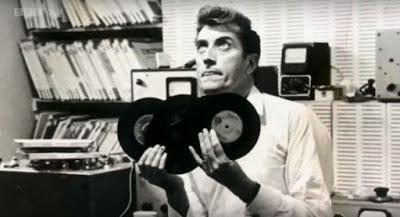
January 16, 2021
"I'm Open To Anything" by William E. Jones (We Heard You Like Books)
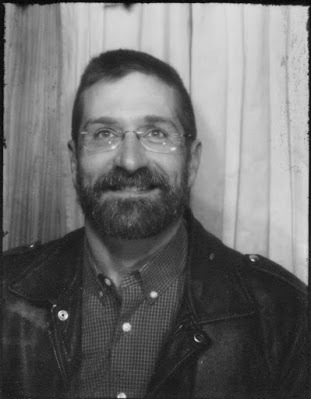
January 16, 2021
I spent the morning reading the last pages of a novel by William E. Jones called "I'm Open To Anything" in the bathtub. I do a lot of reading in the tub because it's a private zone where no one can reach you. Bathrooms are a unique location for such excellent isolation. I have made some of the most serious decisions while sitting on the toilet or in the bathtub. Many work decisions came from the tub and reading the finest literature, such as Bill's book.
Without a doubt, this novel has the most provocative cover for a book. The cover photograph is by the author and undoubtedly a conversation starter but in some company, not an entrance to communication. "I'm Open To Anything" reads like a memoir of a man's journey into the sexual world of Los Angeles. For reasons I don't fully understand, as a straight man (whatever that means these days), I love the Gay/Lesbian underground subject matter. I admire society's society and how it stays away from the mainstream world in such a fashion that it's invisible unless you know the secret password to that sensual and emotional landscape.
Jones's novel is one of the great Los Angeles books, and he's an author who knows the city well and understands its sexual energy. All his encounters in these pages are fascinating and mostly with Latin men of all sorts. Jones has a deep appreciation for other characters to tell their tale. Here we get a Revolutionary, a book store owner, and various others who roam the same landscape as the author's character. For those interested in the craft and technique of fisting, William tells it in beautiful prose. It's great to read an author who can articulate his sexuality and practice. It's lovely to spend time in the tub with this book.
"I'm Open To Anything" by William E. Jones
ISBN: 978-0996421898 We Heard You Like Books
The Important Albums for Tosh in 1988
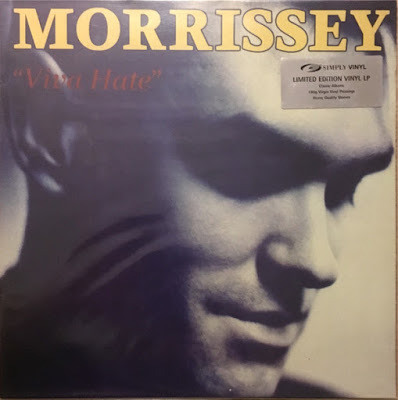
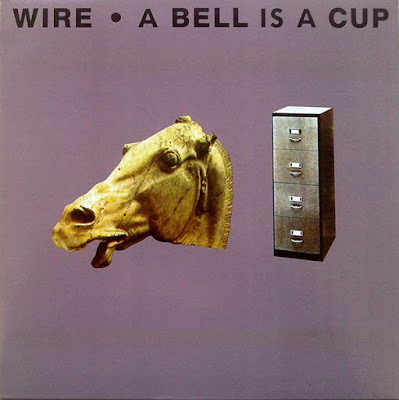
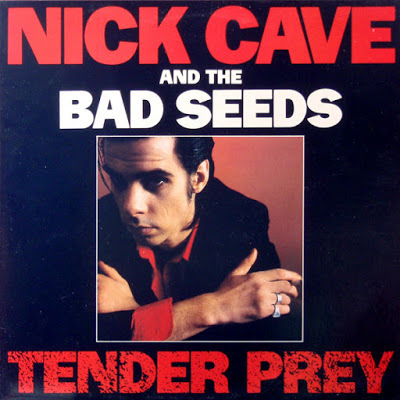
1988 was an explosive year for me. A good year actually. I got a job at Book Soup, as well as curating a film series at Beyond Baroque. And the big news for that year was I got married. The thought of getting married in January of that year would seem impossible. But I met Lun*na, and we connected immediately and got married on December 24, 1988. An exhilarating year! On the other hand, the music world was boring to me. Hip-Hop was hitting the mainstream, as well as Sunset Strip Hair bands. At least I had the misery of Morrissey's first solo album, which was a surprise how good it is. One commonly thought if Johnny Marr is not in the picture, then the Morrissey world will collapse. This was not the case. I'm one of the few who actually prefers the Solo Morrisey material to The Smiths. Wire I followed closely, but not always knocked by their albums, except for "Chairs Missing," which is brilliant. But I do love, "A Bell is a Cup." Straightforward and interesting sounds. Nick Cave is someone I admire but never loved his work. Except for his song "The Mercy Seat, which to this day, I think is his most magnificent song and performance. Sadly, I think it was only these three new albums that impacted me in the year 1988. I must have been buying 12" remixes of The Associates, but not sure. Still, 1988 was a mega-change for me in my personal life. 1989 will be even more dramatic. -Tosh Berman



